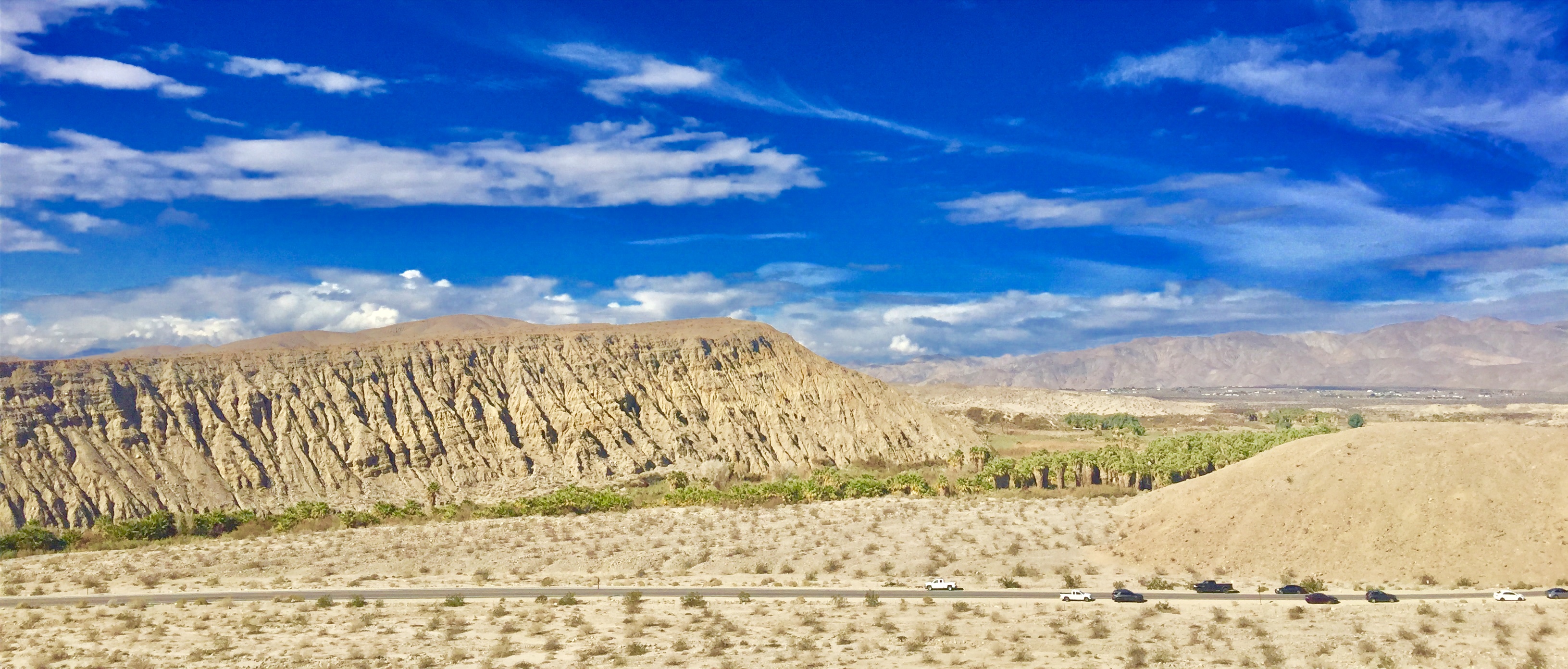Mojave Literary Journeys #2
[August 3, 2023 - Basin & Range Watch notes that Ruth Nolan's writings and poetry on the Dome Fire are now particularly current as the 94,000-acre York Fire burns through the New York Mountains and northern Lanfair Valley in the Mojave National Preserve, California, and into 8,000 acres of the new Avi Kwa Ame National Monument in adjacent Nevada. The wildfire raced towards Wee Thump Joshua Tree Wilderness Area in Nevada on Sunday, but seems to be mostly contained in this direction as of today--Laura Cunningham.]
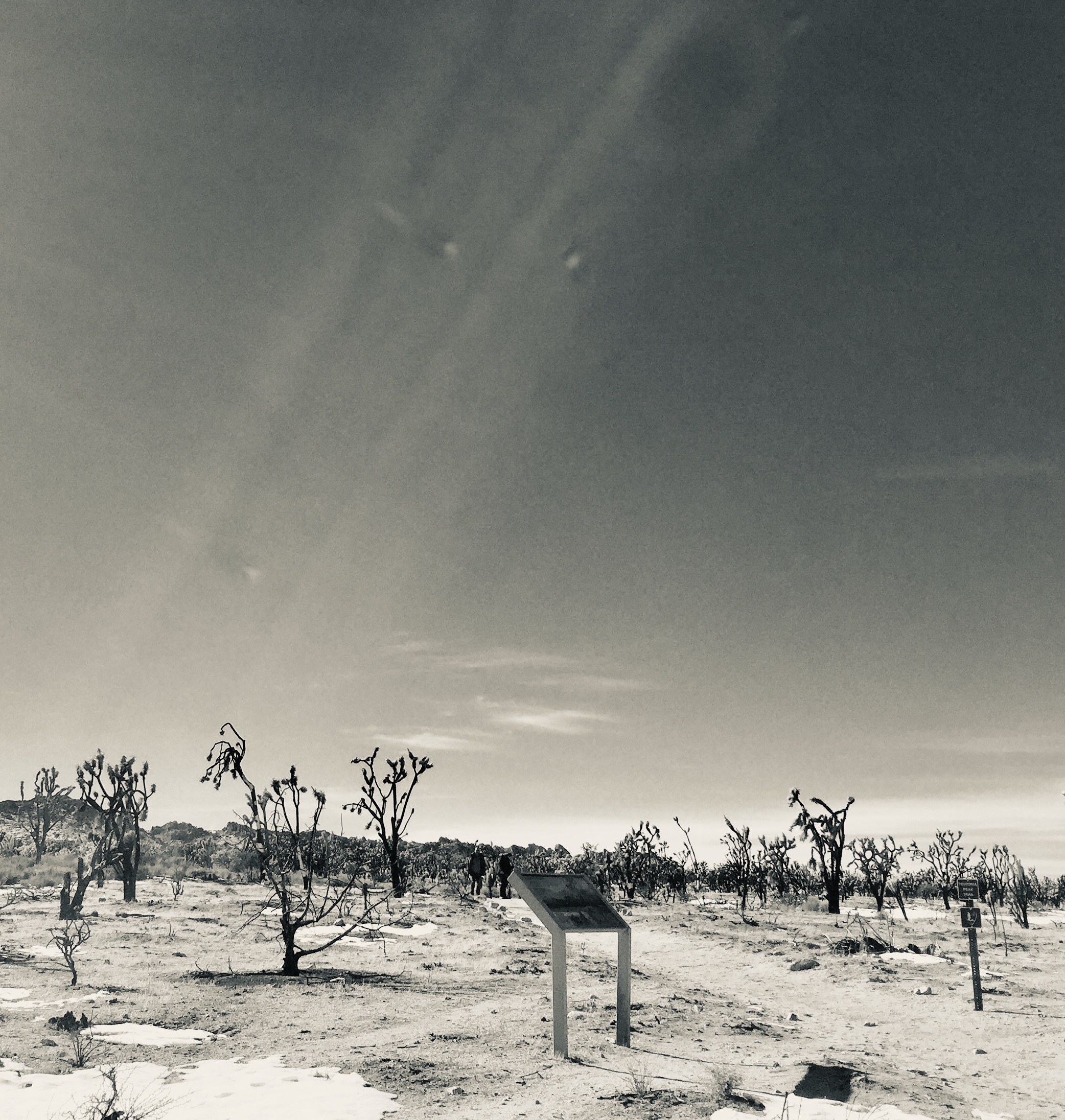
^After the Dome Fire of 2020. This was once the largest Joshua Tree forest in the world. Photo by Ruth Nolan.
Witnessing the Demise of the Mojave Desert to Renewable Energy Industry and Devastating Wildfire, Courtesy of the BLM
by Ruth Nolan, Mojave Desert Poet Laureate
In the late 1980s, I had the privilege of working for the Bureau of Land Management, California Desert District on a wildland fire engine crew and also on the Helicopter 554 hotshot crew, both out of the Apple Valley, CA fire station.
We routinely worked on fire suppression across the huge Mojave Desert where it spreads its majestic, Joshua tree-carpeted swatch across California, Arizona and Nevada. Many fires were sparked by monsoon lightning strikes, and some were started by the carelessness of people. Most were suppressed by us and other BLM crews, such as the one from Hole-In-the-Wall, in remote and scenic wildlands that few are lucky enough to ever venture into due to their extreme remoteness.
Working on a helicopter gave me a close-up view into the integrity of the Mojave Desert's contiguous, mostly-unbroken land flows as it is spelled out in sacred geologic-ecologic eco-tones as one of the world's few remaining such places. And in the late 1980s, as a young adult, I had no idea of the preciousness of this mind-boggling, soul-nourishing place and how quickly and swiftly, just a few decades down the remotest of dirt roads, its demise would be sealed into place.
In the year 2023, I bear witness with heartbreak and dismay as the BLM has established and continues its role as a land broker for the destruction and desecration of many of these wildlands for the construction of large-scale renewable energy projects.
I bear witness as at least one massive wildfire, in the heart of the Mojave Desert at Cima Dome, not far from one of the first massive solar project at Ivanpah in southernmost Nevada, burned 43,500 acres in 2020, devastating what was once the world's largest Joshua tree forest. It took several days for H554 to arrive at Cima Dome, I learned from friends in the fire-suppression community, and without that and other support for critical initial attack intervention - the pandemic of 2020 and lack of fire crews across California was an unfortunate factor -, the region was doomed.
Wee Thump Wilderness is one area that has, so far, been spared. Ancient Joshua trees up to 600 years old, long honored by the Southern Paiute and other tribes as important and sacred ancestral part of the Mojave Desert, sit on a ridge with access views to both the horrors at Ivanpah - Bright Source Renewable Energy displaced several thousand endangered California desert tortoises and destroyed thousands of acres of ancient yucca plant communities - and the far reaches of Cima Dome. Imagine being one of these ancient ones, situated in place and time between the Colorado River - now dammed, of course - and the old trails to Las Vegas and the Mojave River and the ocean at California and all places between.
Imagine being an ancient Joshua tree, bearing witness to the destruction of its cousins across the desert sea at Cima Dome and at Ivanpah, the precious Joshua trees and yucca, forever disfigured or completely gone. Bearing witness and posed precariously, profoundly, and beautifully with views all the way to Avi Kwa Ame / Spirit Mountain, sacred pinnacle of the Mojave and other indigenous desert people to the east. The ancient ones at Wee Thump, viewing all of this, holding that which sustains us all in a soulful sense, and that which sustains corporate greed.
Having loved the desert to death in the unfortunate ways of recent land use planning - still loving the desert to life, this, clinging with shallow roots and a rugged, sun-shouldered tenacity through drought and unimaginable heat for centuries, to witness this. May we listen to these ancient ones and follow their ways, that which they point to, humming centuries of land-story songs and tossing and flowing in the omniscient desert wind, rather than the ugly prisons of death being mapped out by the BLM.
.jpg)
^Bright Source Solar at Ivanpah. Photo by Ruth Nolan.
Wee Thump, Ancient Ones
Shine on, you crazy diamonds
By Ruth Nolan
Wee Thump wilderness on the Mojave desert’s high eastern ridge
Giant Joshua Trees twist into the sky. Some are 600 years old.
Ivanpah Valley below, filled with massive solar tracking towers,
miles of mirrored solar panels that blind all living things, just
A few miles from the black ghost bodies of Joshua trees hovering
like zombies on Cima Dome, 43,500 acres, the 2020 Dome Fire.
In Paiute, “wee thump” means ancient ones. Respect for age.
“Ivanpah” means place of white clay. Relationships with source.
Thousands of acres of former desert wilderness now mimic the sun
Thousands of endangered California desert tortoises, now gone
The watery heat, a lying oasis of life, attracting large birds of prey,
Bald eagles, condors, red-tailed hawks, who burst into flames.
Anything getting too close is incinerated on the spot, and workers
At Ivanpah laugh it away. Streamers, they say, that’s how it looks
When anything daring to challenge this clear blading of sister
Joshua trees, the smaller ones along with ancient yucca cousins
Dares to penetrate what the ancient ones cannot help but see,
Perched and proud on their pedestal, survivors of heat and drought
Silent observers of westward migration and life cycle of the progeny
Of the ancient giant sloth and years of cold and snow and yellow
Brittlebush explosions across their low underbellies in slivers of time
Lovers and gamblers on Interstate 15 below, following the ancient paths
Rushing to get married or divorced or drunk or gamble all the slots
Oblivious to the nuanced stories bladed here and across the Mojave
Being ripped up and plowed away for renewable energy projects, these
ancient ones have no choice but to silently witness their own demise.
Mojave Literary Journeys #1
by Ruth Nolan, Mojave Literary Laureate
January 28, 2022
Dispatch from California’s Coachella Valley Preserve: Leave only Footprints and Stories in the Sand
Once upon a time, the stunning Coachella Valley Preserve near my home in Palm Desert was just a place to hike. An incredible place to hike, with its twisted mud and rock uplifts of landscape, gnarled and heaved by major earthquake events since time immemorial. A place filled with life-giving, Washingtonian fan palm-lined arroyos and washes that carve through this searing dry terrain in surprising places; a place where seeps and running water seem an oxymoron in this desolate place where summer temps often soar upwards of 120 degrees Fahrenheit.
This unique desert landscape, protected by federal wilderness designation, was once upon a time a backdrop for my two decades spent living in this area while teaching at College of the Desert and raising my daughter. I’ve bonded with this unique place whose geology and natural features have been shaped so deeply by this part of California’s infamous an Andreas Fault. I’ve taught writing workshops in the shady beauty of Thousand Palms Oasis, a significant Native village site, and brought my college students on hikes to see the pupfish at McCallum Grove pond. I’ve done field research for my wildfire project and also written many of my own poems here on my favorite bench next to the palm-log house built in the mid-20th century by legendary desert poet Paul Wilhelm.
We’d journey together out there, first with my parents: that time I warned my father to watch where he put his hands in one of the Preserve’s oases on a very warm April day. Grateful to reach shade after a long trek across a stretch of desert that offered zero relief from the sun, he very nearly sat down on a Mojave Green rattlesnake poking its head up from behind a fallen palm tree.
That time I took my daughter and her high school boyfriend – now my son-in-law to explore the barren terrain in an area known as Moon Country. Those hikes with some of my own boyfriends – memories of laughter and loving looks and also arguments. Stooping down to wonder at and photograph pink dune sand verbena in February. Gathering inside my down coat to ward bedazzled, and a little scared, of the scraping sound of palm tree fronds battered by bitter, fierce winter winds. The ravens, fighting each other for the small black fruit dangling from the palms in long, lacey sweeps.
It seemed so simple then, before now.
People were rare. The trails were narrow and little-traveled. It wasn’t that long ago, maybe ten years. But what a difference a fast-warp of time and circumstance have made to this place.
I visited the Preserve over this past holiday season—the start of winter is actually desert outdoors season in the Coachella Valley, when it’s safe to be outdoors without the dangers of heat exhaustion, or even heat by death. My friend Ginny Short, the Preserve Director, recently told me a harrowing story of a deeply experienced hiker in top condition who died on a July day less than a mile from the trailhead to Pushwalla Palms. Still, rattlesnakes can be active – and bite – at any time of the year. This is an extremely rugged landscape, even with views of the urbanized Palm Springs and other desert cities making it all seem safe. Perhaps as safe as a trip to Disneyland.
Which is what this place feels like these days: Disneyland on a busy day. This is not a stretch of my imagination, nor merely a reductionist sarcasm coming from this lifelong California desert dweller towards the explosive numbers of tourists and newly arrived residents who tend to be so naïve about the dangers of the desert that many set out in a hurried day-trip frenzy on our local trails without a single water bottle, something a true desert rat would never do – not even in winter, even on the coldest day. Where there may have been 3 or 4 cars parked at the preserve’s small trailheads just 5 or 6 years ago, now there are dozens cars lined up and down Thousand Palms Road. Look in any direction, and people’s heads and movements pop out of the creosote and mesquite and smoke trees that dot this landscape. The long, narrow ridge hike to Pushwalla Palms is lined with people, some hiking in large groups, and from a distance, look like moving chin stubble or ants crawling along a high horizontal line.
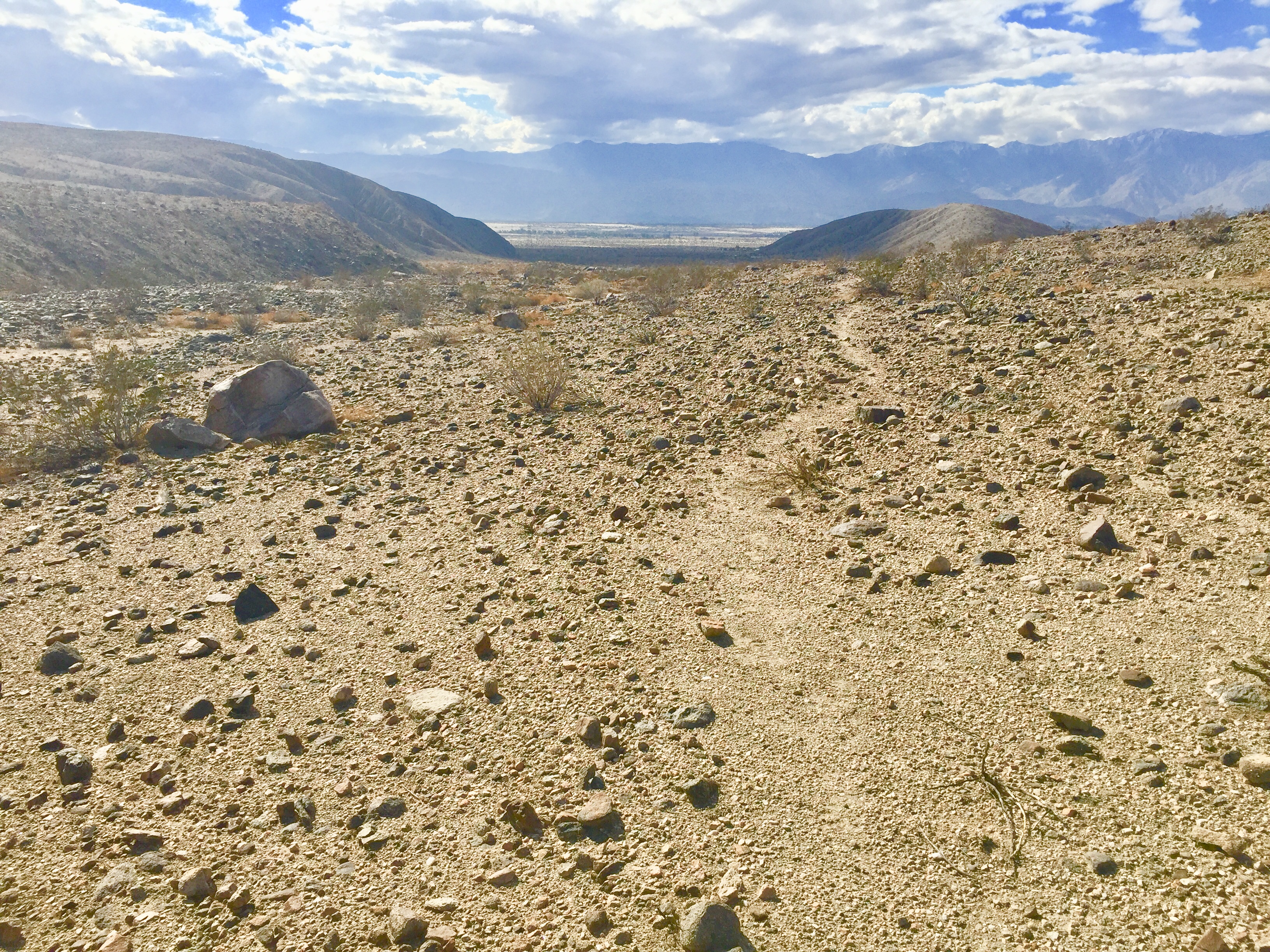
I used to set out for the hike to Pushwalla Palms or Mc Callum Grove, in the old, not so long ago, days. But on my recent trip to the Preserve, something pulled me to explore the stark expanses below the ridge trail. I recalled my friend Ginny, the Preserve director, telling me about a few sleeping circles in the area. I used to be one of those hikers who came with family or friends, as I’ve foretold, and always, our concerns were light and centered on ourselves. But now, everything has changed.
Coronavirus has bisected me from my family and friends in ways I never could have imagined, just as I never could have imagined being faced with a new kind of desert overflowing with more people than could have ever been conceivable – is still not believable. I’ve lost one beloved hiking partner to suicide, and my daughter has moved to another state. My father passed away last year. And the desert has become more my close ally and friend than ever before, comforting and yet also a reminder of just how alone I’ve become. A bittersweet reconnaissance, this place with my stories from a time that once was and is no more. And is now….something altogether else. Although it looks the same. But. Has turned into, so rapidly and when I wasn’t noticing. So defiled.
The pandemic of almost two-years unleashed a savagery upon the California deserts that I’ve witnessed up close. Because I’ve been here the whole time, going deeper into harsh places I’ve known one time as loving spaces within the cradle of my life that once was much safer than it is now. I’ve spent much of the pandemic looking more closely, opening myself to the deeper voices and wisdoms of the desert, seeking beauty and comfort and recognition of something meaningful and connective in the harshest of places.
This savagery, unfolding before my eyes, as I’ve burrowed deeper than ever before into these healing and transformational desert spaces. The savagery of people feeling big cities – the craving for open space, the instinctive edging away from infected crowds. And lacking, for the most part, any type of wilderness ethic or understanding, or even a wonderment to learn from, time spent in the California desert. This prolonged assault on this, one of our last remaining largely-intact contiguous wilderness areas on the planet, has been swift and terrible.
The sleeping circles: I found them, and I had to pick my way across centuries-old desert pavement the color of charcoal to get to them. It took awhile to find them, because they were not only surrounded with multiple rock stacks and makeshift rock shrines – one with a circle of crystals around it – and, had I not know what I was looking for, I may have assumed that those two sleeping circles were just….dirt circles created so someone could make a giant peace sign in one, and an imitation medicine wheel in the other! Yes, a peace sign. And a medicine wheel.
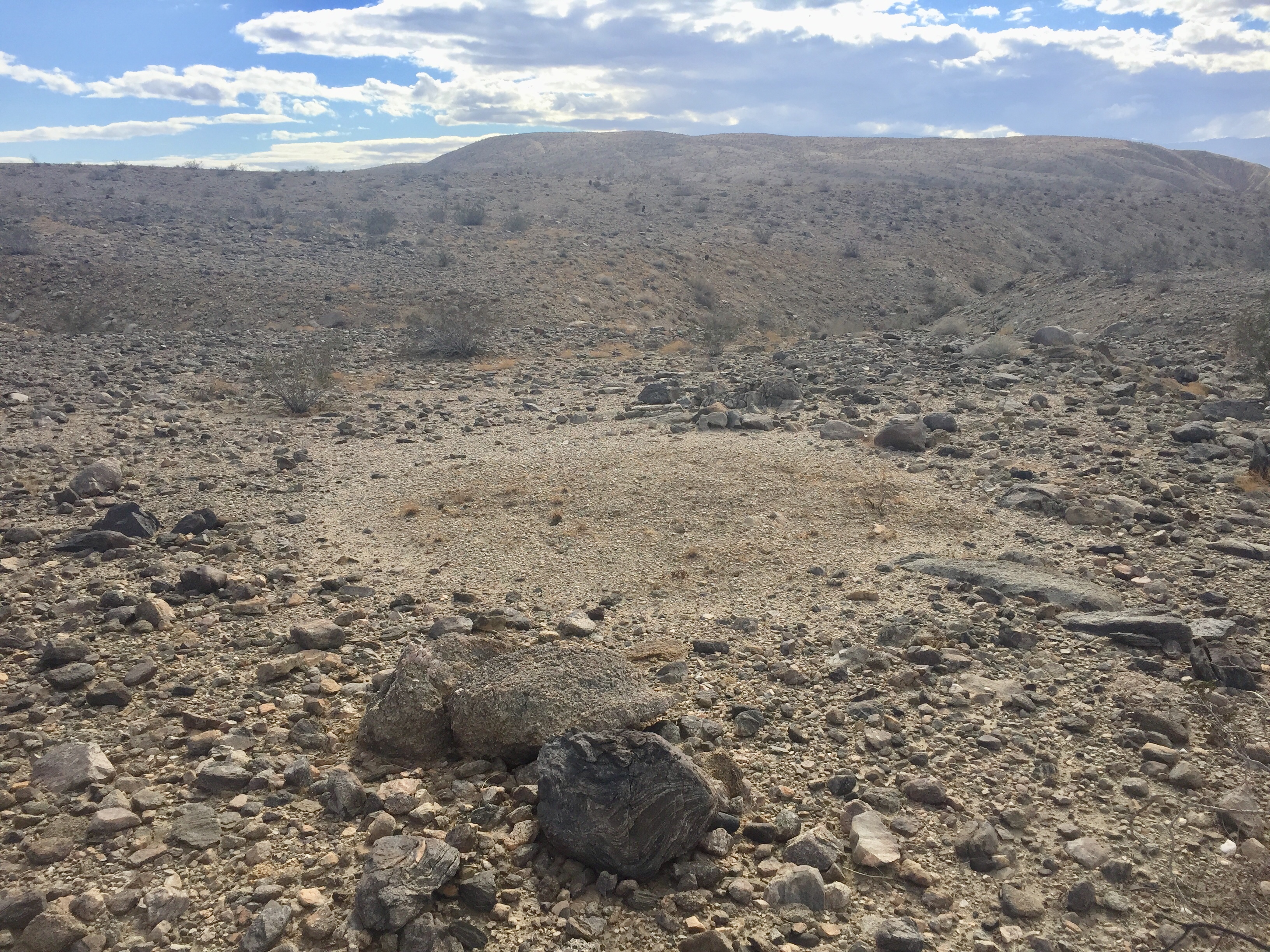
It angered me. It didn’t surprise me. I spent the next two hours methodically, and at times kneeling or sitting, to un-do all of the stacked rocks. Many of them were actually boulders; people had been spending a lot of time hiking around the area and bringing rocks and boulders back to the sleeping circle to make desert pavement. That, and gathering quartz crystal from afar- crystal that in some instances is actually lithic scatter and perhaps offerings for prayers made by the ancestors of the Native people who live in this region now. It wasn’t easy to dismantle everything, and I didn’t get it all. Every now and then, I’d look up at another moving stubble of hikers way up on the ridge trail. Did any of them look down to see a crazy woman throwing rocks and sometimes yelling something pissed off? A woman clawing at dirt, trying to smooth the small debris away, hoping to restore something to what it is, or once was. And possibly, not getting it right.
I spent a few more hours after that wandering the area and exploring, finding an ancient trail fragment, more lithic scatter, and…many more rock stacks across that wide plateau. Rock stacks that may have very well desecrated an aged Native placement. Rock stacks for what? To mark one’s territory, to say, “I have been here, too” and to say, “I don’t care. It’s about me now.” And the lawless and disheveled social upheavals of this terrible pandemic, coupled with terrible personal losses of loved ones and a safe way of life for so many, has perhaps made this an instinctive gesture.
I picked the deflated remains of two mylar balloons out of creosote and mesquite bushes in a surprising small wash that also offered a lone, yellow spring wildflower and a few tiny sprigs of green – so early, but then, we’d just had a lot of rain. I scraped a plastic water bottle out of a muddy spot and grabbed a crumpled beer can. Throughout that area, the power of the plateau, with its pure and open views of the magnificent San Jacinto and Santa Rosa Mountains across the valley floor, rising sharply up into blue haze and capped with life-sustaining snow. The shimmer and warmth of the black desert pavement beneath my feet, warming my soul, the power and force of it all. Not too far below, traffic and people coming and going from their parking spots along the road. A sense of stories, so many stories, layered beneath and hovering above my own. A feeling and certainty that mine were only and completely a segment in a very long chain of human stories in the infinite numbers of stories upon stories in the great histories of human migrations as they have transpired across sacred desert places such as this, against a heaving and motionless panoply of earth-shaping as time has churned along so eternally.
And I was inspired to ask myself: what can I do for the desert? That, along with, what can the desert do for me? I suddenly realize that these two questions form a satisfying knowledge chain, a completion of relationship between this land and I. One is not in right balance without the other in place, and as important as the synchronicity of movement between one’s right and left hands.
And after I hastened home as the sun dipped below the mountain, and a chill began to set in, I opened my MacBook and looked up this: the National Park Service “Leave No Trace Seven Principles,” especially this:
Leave What You Find
- Preserve the past: examine, photograph, but do not touch cultural or historic structures and artifacts.
- Leave rocks, plants and other natural objects as you find them.
- Do not build structures, furniture, or dig trenches.
It was a day well-spent in the Coachella Valley Preserve. Another story lived, as it continues to unfold, spelled out across the rocks and sand.
--the end--
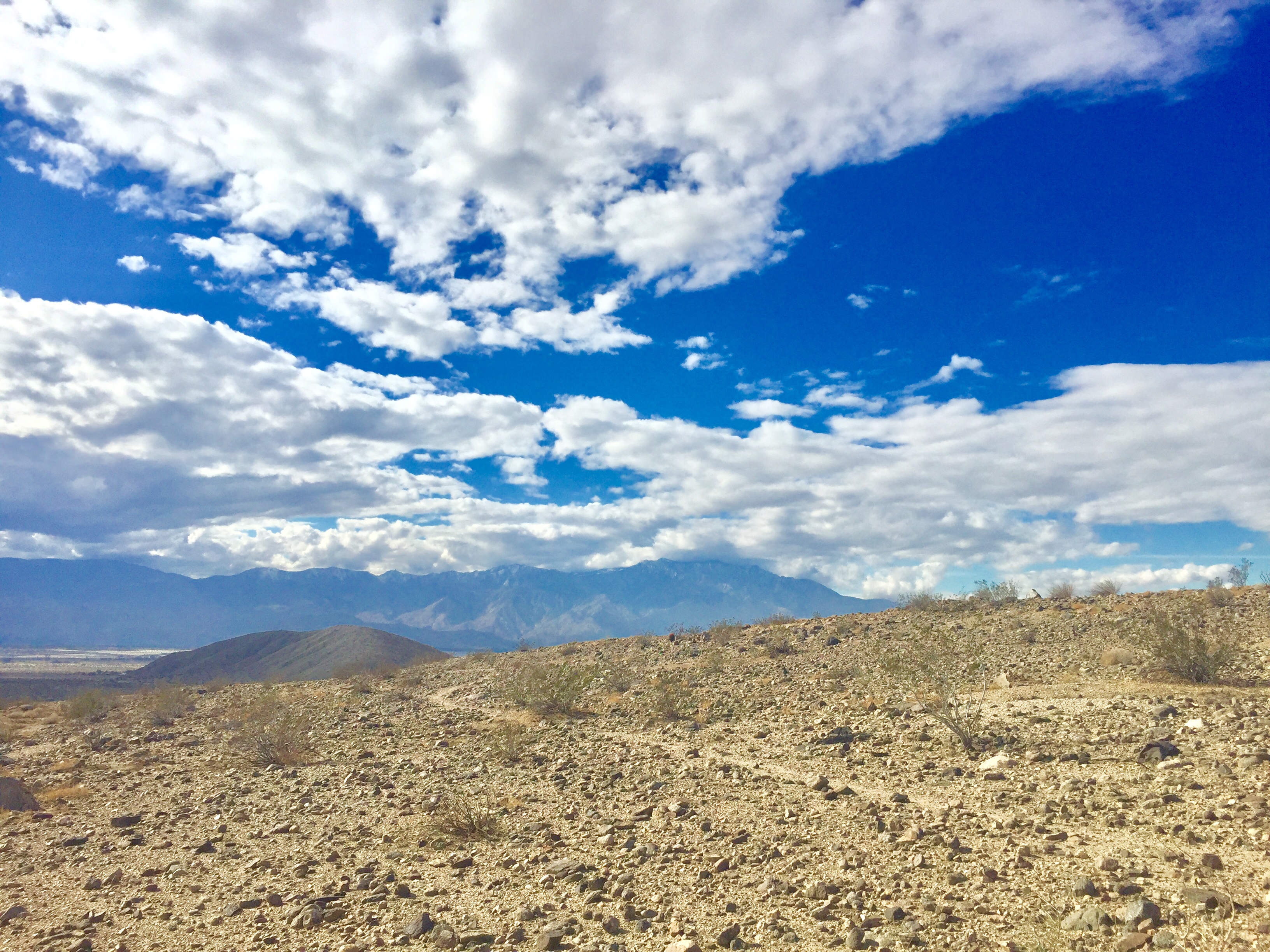
Mojave Desert Literary Laureate Wins Poetry Prize
^Recovering Joshua tree wildfire: not all Joshua trees were killed, and recovery continues. Photo: Ruth Nolan.
October 23, 2021 - Palm Desert, CA - Mojave Desert Literary Laureate Ruth Nolan has won the 1st runner up award in the Hillary Gravendyk Poetry Prize 2021 for her new poetry book, After the Dome Fire. This collection of poems reflects on the presence and impacts of Mojave Desert wildfires on people, places, and the ecologic integrity of the desert environment. Some of the poems are drawn from Ruth's own experiences working as a wildland firefighter for the Bureau of Land Management California Desert District.
"The struggle to protect the desert takes many forms, and the increasing number and size of wildfires - for example, the 2020 Dome Fire of the East Mojave National Preserve - are a growing threat to our cherished desert wildlands," says Ruth. "Still, I have hoped to embody, in my poems, the desert's impressive knack for resilience and adaptation following wildfire events, as well as the ferocity of longtime desert dweller's to persevere and find beauty within hardship in this fragile, yet tough, land of isolation and fruitfulness that the Mojave Desert is."
New Mojave Desert Literary Laureate Position Announced
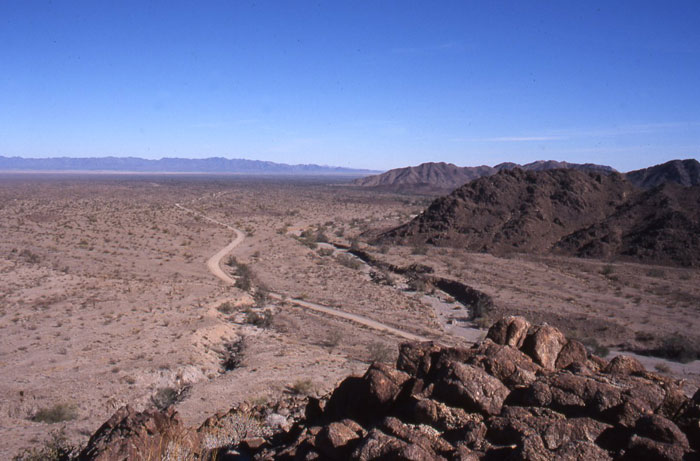
^Chuckwalla Valley, Riverside County, California Desert.
February 10, 2021
The environmental group Basin and Range Watch is excited to announce its sponsorship of a new Mojave Desert Literary Laureate position, to be launched on March 1, 2021.
Ruth Nolan, author and editor of No Place for a Puritan: the Literature of California's Deserts (Heyday Books) has been named the inaugural Mojave Desert Literary Laureate. She grew up in the Mojave Desert near Apple Valley, CA and has lived most of her life in the California and Arizona deserts. "The creation of this literary laureate position to represent the glaringly underserved Mojave Desert is long overdue and desperately needed," she says.
The Mojave Desert Literary Laureate position will serve to bring the literary arts - lectures and writing workshops for residents and visitors of all ages - to the region's rural communities, and help strengthen the dedication of Basin and Range Watch to Mojave Desert conservation issues through these interconnected activities that will embrace both the humanities and the sciences. In addition, the acting laureate will represent the Mojave Desert through their own continuing literary endeavors - writing and publishing - in the broader California literary communities and beyond.
"We are excited to have designated Ruth Nolan as our first laureate," said Laura Cunningham, Co-Founder of Basin and Range Watch. "This new position is so important to broaden our educational efforts to advocate for the Mojave Desert, and meld the literary arts with the science of conservation biology. Nolan has a long history of poetry and writing in and about the desert with consideration too for social justice issues of rural and underserved communities here. With this Literary Laureate position, we intend to finally give the Mojave Desert a voice."
Over the past decade, Ruth has led California desert-centric writing and literature workshops at the Desert Studies Center at ZZYZX; the Desert Institute at Joshua Tree National Park; 29 Palms Inn; Death Valley Historical Society; Copper Mountain College; the High Desert Book Festival - for which she received a grant from California Humanities; and Shoshone Village.
"I feel good about the groundwork I've laid in establishing these events through these previous programs throughout the Mojave Desert," she says. "I will continue to build on these community and organizational connections to strengthen the presence of literary events in these desert places, in a dedication to education and inclusivity and community-building, through the literary arts."
Nolan will serve in the Mojave Desert Poet Laureate position through Feb 28, 2023, and will help designate her successor, who will begin their two-year term on March 1, 2023.
Basin and Range Watch is a 501(c)(3) non-profit working to conserve the deserts of Nevada and California and to educate the public about the diversity of life, culture, and history of the ecosystems and wild lands of the desert.
Mojave Desert Literary Laureate
Stay tuned for events, workshops, and a web portal to our new position.
In the tradition of the National Poet Laureates and National Youth Poet Laureates, Basin and Range Watch is pleased to announce this new Literary Laureate position to celebrate the Deserts.

